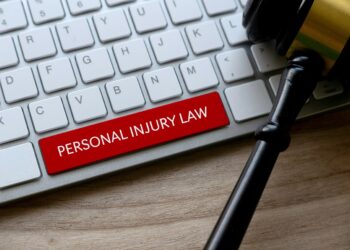When a child is involved as a passenger in a car accident, it plunges the family into a whirlwind of emotions and urgent actions. For any parent, the safety and well-being of their child is the foremost priority, but such incidents often bring a cascade of legal, medical, and emotional challenges that need immediate and thoughtful handling. This situation calls for a calm and systematic approach, balancing the immediate need for medical attention with the intricacies of insurance and legal procedures that follow.
This guide aims to provide parents with a comprehensive understanding of the steps they should take legally in the wake of such a distressing event. From ensuring the child’s immediate safety and medical care to navigating the complexities of insurance claims and legal advice, the article outlines a structured pathway for parents to follow. In doing so, it emphasizes the importance of not only addressing the physical injuries from a legal perspective but also the psychological impact on the child, ensuring a holistic approach to recovery and resolution.
1. Ensuring Immediate Safety and Medical Attention
The first and foremost step is to ensure the child’s immediate safety. If you are at the accident scene, assess the situation for any immediate dangers, such as traffic or fire. Ensure that your child, if conscious, is in a safe place away from traffic. Regardless of the apparent severity of injuries, seek medical attention immediately. Some injuries, especially internal ones, may not be immediately evident.
2. Contact Emergency Services
If you’re not at the scene, upon learning about the accident, ensure that emergency services have been contacted. If the child is with another guardian or driver, get in touch with them to understand the situation and ensure that the child receives medical attention.
3. Gathering Information at the Scene
If you are at the scene, gather as much information as possible. This includes the contact details of the driver, vehicle registration details, insurance information, and the contact details of any witnesses. Take photographs of the accident scene, including all vehicles involved, any skid marks, road conditions, and traffic signs.
4. Documenting Medical Care and Symptoms
Keep a detailed record of all medical care and symptoms following the accident. This includes hospital visits, diagnoses, treatments, prescribed medications, and any symptoms or pain the child experiences. This documentation is crucial for insurance claims and potential legal action.
5. Filing an Insurance Claim
Contact your insurance company as soon as possible to report the accident. Provide them with all the necessary information and follow their instructions for filing a claim. If the child was a passenger in another person’s vehicle, their insurance might also be involved.
6. Seeking Legal Advice
Consider consulting an auto injury attorney, especially if the accident was severe or if there are disputes regarding fault. An attorney can guide you on the best course of action, help in dealing with insurance companies, and ensure that your child’s rights and well-being are protected.
7. Monitoring Your Child’s Physical and Emotional Health
After an accident, children can experience both physical and emotional trauma. Monitor your child for any signs of distress, anxiety, or behavioral changes. It may be beneficial to consult a child psychologist or counselor to help them cope with the trauma of the accident.
8. Communicating with Your Child’s School
Inform your child’s school about the accident and any resultant physical or emotional issues. This will help teachers and school staff to understand any changes in behavior or performance and to provide the necessary support.
9. Dealing with Long-term Injuries
In cases of long-term injuries, you might need to arrange for ongoing medical treatment, physical therapy, or special accommodations at home and school. Keep all records of these arrangements as they can be crucial for insurance and legal processes.
10. Understanding the Legal Process
If legal action is necessary, understand the process. This includes knowing the statute of limitations for filing a lawsuit, the types of damages that can be claimed, and the process of a personal injury lawsuit. A competent attorney can provide invaluable guidance in this area.
11. Maintaining Communication with Involved Parties
Maintain open lines of communication with all involved parties, including insurance companies, legal representatives, and healthcare providers. Ensure that you are kept informed of all developments related to the accident and your child’s well-being.
12. Preparing for Financial Implications
Understand and prepare for the financial implications of the accident. This includes medical bills, legal fees, and potential settlements. An attorney can help you understand what compensation you may be entitled to, including for medical expenses, pain and suffering, and any future medical needs.
13. Supporting Your Child’s Recovery Journey
Finally, the emotional support you provide to your child during this period is crucial. Encourage open communication about their feelings, fears, and concerns. Be patient and understanding as they navigate through the recovery process.
A child being involved in a car accident is a distressing experience for any parent. However, by taking the appropriate steps, including ensuring immediate medical attention, gathering information, consulting legal professionals, and providing emotional support, you can effectively manage the situation. It’s essential to prioritize your child’s physical and emotional well-being and to navigate the legal and insurance aspects with diligence and informed decision-making.






